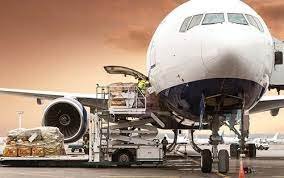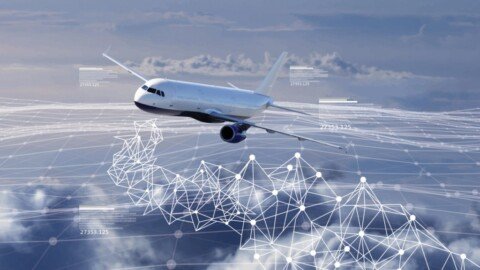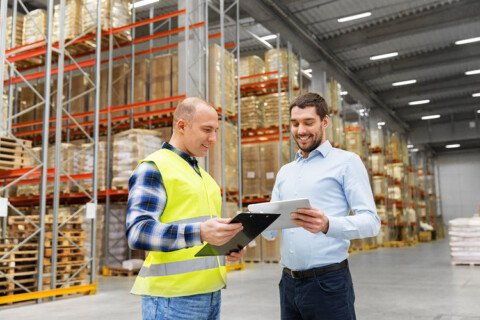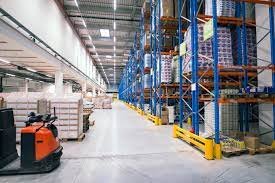Amidst the ongoing third wave of COVID-19 pandemic, it seems logistics companies are hurrying up to redesign and revamp their supply chain operations for enhancing efficiency and productivity levels and also to protect their businesses against a wider and more acute range of potential shocks and disruptive events, by taking every detail to its broader context. In the process, companies are adopting various highly innovative and efficient strategies to propel growth and subsist in the competitive environment.
Ritika Arora Bhola
There’s certainly an urgent need to rebuild supply chain which is far more resilient and flexible, in order to survive and achieve growth. And the pandemic is actually forcing the logistics companies to become flexible, responsiveness, and efficient while guaranteeing costumers’ demands at minimum costs. With lessons learnt from the last two years COVID chaos (2020-2021), supply chain businesses are finally looking at building resilience, chalking out contingency plans and bringing in agility in 2022 and beyond. As the pandemic wreaks economic turmoil around the world with the ongoing third wave, modern supply chains are again experiencing unprecedented stress and are drawing an increased level of scrutiny. Therefore, experts suggest us some important aspects to consider for rebuilding and restructuring supply chains to ensure resiliency, agility and speed of the supply chains of the future.
Ramesh Krishnan, Vice President at Stellar Innovative Transportation Solutions jots down several key points which need to be taken care of while rebuilding and restructuring the supply chain.
- Time to market
- Cost to reach market
- Statutory compliances and adherence of regulatory enforcement
- Globalisation
- Use Alternative resources for green initiatives
- Financially sustainable design
“Supply chains were built typically for improving the efficiency in the pre-COVID-19 era and the focus has been on minimising the cost of operation. But, the pandemic taught us the value of redundancies in the supply chains, be it alternative factories, warehouses in multiple locations, dual sourcing or even higher safety stocks. Though these principles go against the idea of ‘lean’ business,” says Dr Debmallya Chatterjee, Professor and Head- Operations and Supply Chain at SP Jain Institute of Management and Research (SPJIMR).“Today’s businesses need to consider these redundancies as a part of their business model.”
Many experts lately talked about rebuilding the supply chains through strategies such as multi-sourcing and near-shoring which, Chatterjee says is not going to be easy and may not be a solution in the short-term.
“If we look at near-shoring as a strategy, it would require a lot of time to set up an alternative and that too would require a lot of clearances including a nod from the local government. For example, when it comes to producing medicine, replacing India or China for a country like USA would not be easy. Though there were a lot of discussions around moving out of China, today the companies are happy continuing with China as their manufacturing hub. This is mostly because of the infrastructure they had developed over a long period of time that is difficult to replicate elsewhere. When it comes to multi-sourcing, the focus for the companies should be to evaluate their suppliers on ‘time to bounce back from any disruption’ rather than focusing on how long the stocks survive. This can be considered as a KPI for the suppliers so that an ecosystem is developed that can handle future disruptions,” says Chatterjee.
“We are at the cusp of a new supply chain era. Supply chain 4.0 will see technology and digital operations come to the forefront,” explains Abhishek Chakraborty, Executive Director, DTDC Express.“The use of data and technology to serve our customers is what is rewriting the rules of the logistics business. So, any restructuring will have to consider the role of data and technology. Data analytics fed into an AI or ML system can uncover underlying fundamental problems and provide solutions to them as well.”
“Digital transformation is imperative for the labour intensive supply chain industry. The use of new technology enhances the efficiency and transparency in the sector. Yet, we must not forget that human capital is the backbone of the logistics industry. Technology can assist it and not replace it. The onset of COVID-19 has also shown the need to account for the toll of pandemics and natural disasters on the industry. The supply chains of many sectors grounded to a halt and some even had to move to new locations, take new routes. Supply chain models need to have an inbuilt agility to function in the times of extreme change such as those brought about by the current pandemic,” Chakraborty adds.
A futuristic ecosystem-building approach
In the last few years, logistics companies globally have adopted various innovative and efficient strategies to build-up highly resilient supply chains with futuristic approach and world-class standards. Focus has also been majorly on improving the supply chain and logistics infrastructure. The industry had long back realized the importance of 100 per cent digitalisation of business operations, but the adoption was relatively slow, but it is COVID that acted as a catalyst and forced the industry to push towards ‘digital operations.’
Chatterjee partially agrees. “The race to make their supply chain digital has created a unique problem for many Indian organisations. A good number of them have misunderstood the idea and are running behind upgrading the existing technologies in bits and pieces instead of looking at it holistically. It requires a complete change in the approach. The future supply chains would not work in isolation. The supply chain partners need to be integrated to reap the benefit of the technologies in the form of greater flexibility, improved responsiveness and greater agility.”
According to Krishnan, “India is ready for software technology of any level but not yet ready for hardware technology in most sectors. The reasons are:
- High cost of hardware technology and dependence on import instead of locally available technology.
- Huge peaks and lows due to big days and festivals. The skew is so high that if we deploy technology, we will have fixed cost. Whereas, during lows, we will not be able to meet the capacity, and then during peaks, technology will become insufficient and we will have to deploy manpower. Moreover, manpower unfortunately is easily deployable and dispensable and hence is a variable cost. Only in case of high precision items it would make sense to upgrade technology that too to meet global standards.
“In this age of supply chain 4.0, it is imperative for the Indian logistics industry to integrate technologies such as IoT, cloud computing, AI and ML to scale up distribution operations. This has already begun with DTDC,” Chakraborty says.
For instance, development of temperature-controlled logistics vertical that utilises IoT sensors to monitor ambient temperature inside transport vehicles and containers.
“At this time, whether or not India is ready for such technologies is a moot point. Integrating such technologies in operations is no longer a luxury but a necessity. There are challenges, such as the requisite technical knowhow on how to adapt and use these technologies. Acquiring such knowledge requires investments and businesses find it difficult to make a case for the investment in some of the emerging technologies. But, as more and more clients demand higher resilience, visibility and agility, logistics players will be forced to adopt these technologies.”
New practices and emerging solutions for the next decade
Undoubtedly, the impact of COVID-19 pandemic on global supply chains had certainly been huge. According to a report published by Accenture, more than 90 per cent of the global supply chains got impacted by the pandemic with more than 75 per cent of them reporting heavy financial loss. However, despite the plethora of challenges like labour shortage, capacity crunch, high space costs, etc. logistics service providers ensured business continuity by adopting ‘Operational Smartness’ and ‘Innovation’ as a survival kit and successfully transported time- and temp-critical cargo, especially pharmaceuticals.
“Recent technological advancements have changed the face of the supply chain and logistics industry,” agrees Alexandre Amine Soufiani, Managing Director at FM Logistic India. “With convenience and customer experience at the forefront of logistics trends, warehouses and distribution centres need to further adapt to the evolving consumer landscape. During the COVID-19 pandemic, the rise of e-commerce has played a huge role in shaping the way warehouses operate, as have consumer expectations for speed of delivery, customisation, product availability, and much more. With the growing complexities of customer demands and the globalisation of many retailers due to e-commerce, warehousing trends are starting to shift to keep up with the ever evolving and increasing demand of customers.”
Amine cites few efficient solutions:
- Omni-channel Logistics—The next generation of business requires logistics networks tailored to the needs of each and every channel. Omni-channel services are the need of the hour and companies are realigning supply chains to cater to multiple channels from the same warehouse.
- Warehouse Management Systems—Secured, real-time access to the consumer’s ecosystem of connected devices enables a variety of innovative pick-up and delivery services, as well as improved customer service support and valuable insight generation for logistics providers.
- Augmented Reality—Blurring the lines between the digital and physical worlds, augmented reality (AR) is providing new perspectives in logistics planning, process execution, and transportation. By adding virtual layers of contextual information onto a heads-up display or other digital device, AR empowers workers by providing the right information at the right time and in the right place.
- Internet of Things—IoT has the potential to connect virtually anything to the internet and accelerate data-driven logistics. Everyday objects can now send, receive, process, and store information, and thus, actively participate in self-steering, event-driven logistics processes.
- Robotics and Automation—The first wave of automation using collaborative robotics has arrived in the logistics industry. Driven by rapid technological advancements and greater affordability, robotics solutions are entering the logistics workforce, supporting zero-defect processes and boosting productivity.
- Space Optimisation—Warehouses are constantly faced with the challenge of efficiently optimizing space. It is critical for warehouses to run as efficiently as possible and work on warehouse space optimisation which calls for the deployment of innovative logistics solutions. The goal is to increase the quantity of stock that can be stored in the available space and to ensure it can be located and moved safely but efficiently.
- Sustainable Developments—An increasing shift towards renewable or ‘green’ energy sources (solar, wind, etc.) is propelling the development of electric mobility and facility solutions for logistics.
Taking the above into account, Krishnan says, in the current situation sustenance by profitability is replaced by funding and higher valuation. But in the long run ‘profitability’ will be the key mantra. Apart from this, a lot of government backed initiatives like development of infrastructure, subsidy and promotion of technology, duty waiver for import equipment, and Make in India, etc. to make technology cheaper is on tracks.
“Complete focus on health and well-being of workforce has to take a driving seat,” Chatterjee feels looking at the current situation.
“A continuous cycle of mobilise (plan and resources), sense (priorities/risks), analyse (scenarios), and configure (network designs) would help mitigate the risks to a greater extent. Besides, the supply chain practitioners also need to sense weak signals of disruptions that were generally ignored in the pre-pandemic era. The disruption caused by the COVID-19 pandemic will have a lasting impact on businesses and companies need to build resilience in their supply chains for the future. They need to bring in redundancy that can help in a greater flexibility for their supply chains. They also need to bring in transparency in the end-to-end supply chain to maximise visibility and respond better to future disruptions. This capability can be achieved only through technology—by harnessing data analytics and automating processes.”
According to Chakraborty, the ability to shift or reroute the entire supply chain to service high demand areas or procure goods from still functioning areas was the most critical skill during the pandemic. E-commerce and digital sales have grown by leaps and bounds in this period, and logistics players must cater to this growing segment. Additionally, urbanisation necessitates the designing of a new supply chain model to cater to the e-commerce sector and reach the growing population.”
“As other industries move into recovery and growth mode, so do the logistics companies. We are seeing an increase in investment in facilities, fleets, manpower and technologies. These investments can be termed as smart investments as they will be augmented by smart analytics, data and emerging technologies. For example, data analytics will inform our decisions on where to open new warehouses or retail outlets, how many vehicles to onboard, etc.”
“Fleet expansion will be mainly geared towards electric vehicles, both to save costs in the long run and to reduce our carbon footprint. All of the above changes will be encouraged by an expected reduction in investment required for new technologies, as both startups and larger companies start offering a more affordable SaaS or PaaS model to logistics players,” Chakraborty continues.
Productivity growth at the sectoral level and the Road to Recovery
According to Amine, Indian warehousing segment also had its unwanted share of COVID impact. However, he feels, driven by a robust growth in the e-commerce and manufacturing sectors as well as rising demand in emerging tier II and III cities, logistics and warehousing space absorption will be fastest to recover from the COVID-19 aftermath. “Growing demand for temperature-controlled warehouses to cater to the cold chain, pharmaceutical, food and FMCG sectors, as well as growth in organised retail, are the likely drivers of this growth,” highlights Amine.
Warehousing demand is increasing and particularly driven by e-commerce and pharma sectors, says Amine.
“The centre’s focus in making India a global manufacturing hub has caused warehousing clusters to expand rapidly beyond metros into tier II and III cities. Also, as most of these are aligned with industrial hubs, the demand for Grade A warehouses there has increased substantially. “
“Subsequently, the increasing internet penetration in rural areas in addition to rising household income and the government’s push on digital in rural areas has increased the pressure on manufacturing organisations to move closer to their customer base in these areas.”
“In this endeavour to cater to the hugely untapped rural customer base, many organisations have realised the importance of developing quality and world-class warehousing facilities as these not only offer operational excellence but also facilitate cost optimisation.”
“To further strengthen our omnichannel fulfilment capacity, we will be expanding our network of large MCFs, supported by investments in automation connected to a full network of urban logistic hubs. Globally, RPA is a prime focus area for us. We deploy AGVs and robots for various activities like loading, unloading, picking, palletising, etc. In India, we have implemented drones for inventory control at one of our warehouse and are in the process of getting this implemented across all warehouses. We have also implemented a fully automated packing line for various clients.”
“Continuing…these in-city hubs are designed to offer a full range of sustainable omni-channel services that include order fulfilment, last stage packaging customisations, digital marketplace, last stage readiness, and cross docking. Green last-mile delivery, too, is part of the offer, thanks to our EV charging point enabled infrastructure,” tells Amine.
“The year 2022, as I see, will witness the rise of organised logistic offerings to small and medium businesses (SMBs),” says Chakraborty. “SMBs form the largest industrial group in India but are not served as well by most logistics companies. DTDC is leading the charge on providing an organised bouquet of offerings to this section. We also have an increased focus on improving last-mile logistics, especially for e-commerce. This means that last-mile delivery will become more organised, tech-enabled and sophisticated to serve both e-commerce platforms and the end consumers better.”
For Krishnan, the biggest learning is reality check on what only a façade was and what necessity was. “Supply chain industry worked seamlessly even during the pandemic without much physical supervision. Work from home and technology intervention became an integral part of the supply chain business. Time to market is gaining more importance, however one must strike a balance between the cost and profitability but keeping in view the future potential. With China becoming eyesore for many western countries, India has immense opportunity to become a global manufacturing hub, which will offer the biggest advantage of scaling up volumes. This will have a cascading effect on GDP, cost of production, automation and technology, and growth of consumerism. This will have a very positive impact on logistics and distribution aspects, be it long haul, first-mile, last-mile, or warehousing operations,” Krishnan adds.
“If you look at e-commerce, pharma or FMCG, the supply chains have performed amazingly well post the first quarter of 2020,” Chatterjee points.
“The organisations have pulled it well after the initial hiccups and no one can ignore the support from 3PL service providers. It is true that the businesses have changed drastically for logistics service providers and forwarders during the pandemic. Logistics companies who hadn’t undertaken digitisation of their end-to-end processes were severely impacted, especially during the lockdown.”
“Now, as we sail through the New Year, logistic companies are yet to get back to normalcy, as ports and airways are still not fully functional. The movement of containers ships is yet to be normal which had a rippling effect on the global supply chains leading to piling up of inventories and demand-supply mismatch across geographies. As we are facing another wave of the pandemic worldwide, few things need to be taken care of by the logistics and supply chain companies going ahead.”
- The pandemic had taught us the value of preparedness and supply chain’s ability to bounce back. Planning is good but what matters most is the ability to re-plan and be adaptive to changes. The pandemic has taught us the importance of developing a change-agile mindset in the leaders.
- One important lesson companies also learned the hard way is not to depend on a single supplier or single logistics partner for their entire operations.
- The concept of redundancy in the form of more than one logistics partner or supplier needs to be inculcated in the minds of supply chain managers and slowly they will be able to strike the fine balance between the efficiency and resilience. This will not come overnight.
- Also, companies need to be empathetic and transparent to their workforce amidst difficult times. It is important to recognise employee and workforce contribution in keeping the supply chain uninterrupted.
- Importantly, employee well-being will be the mantra for success. Keeping the remote workforce motivated is going to be one of the biggest challenges for supply chain leaders in the near future.







